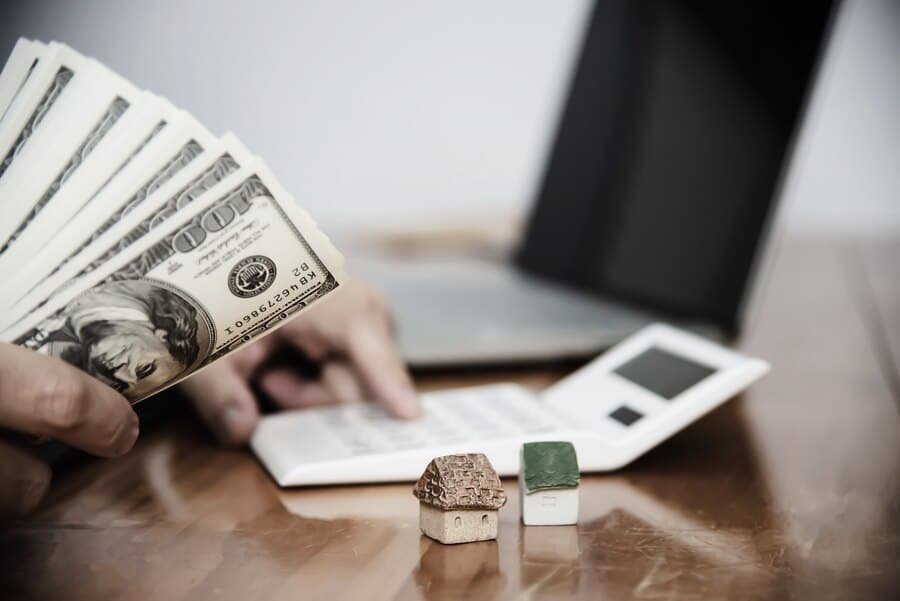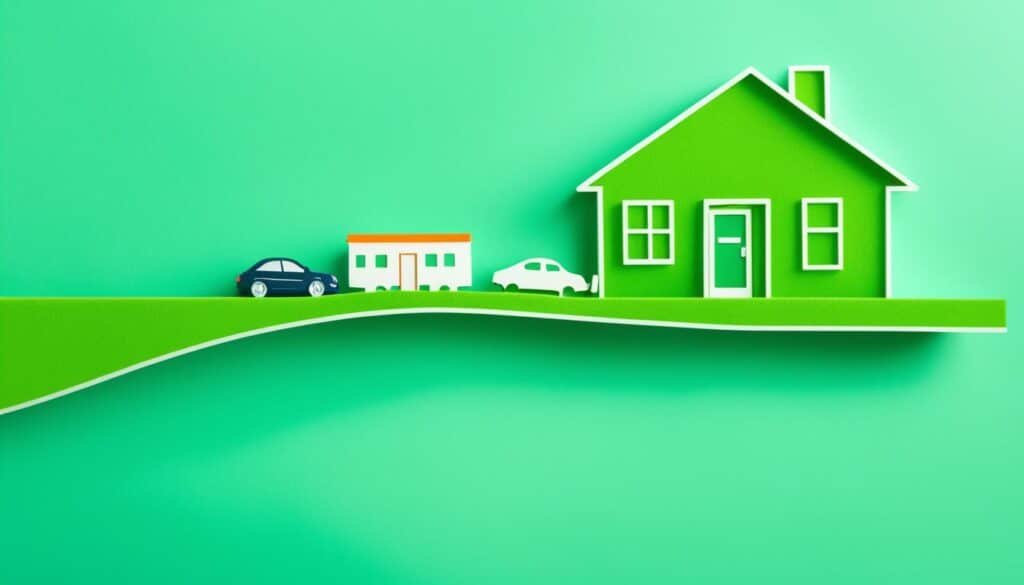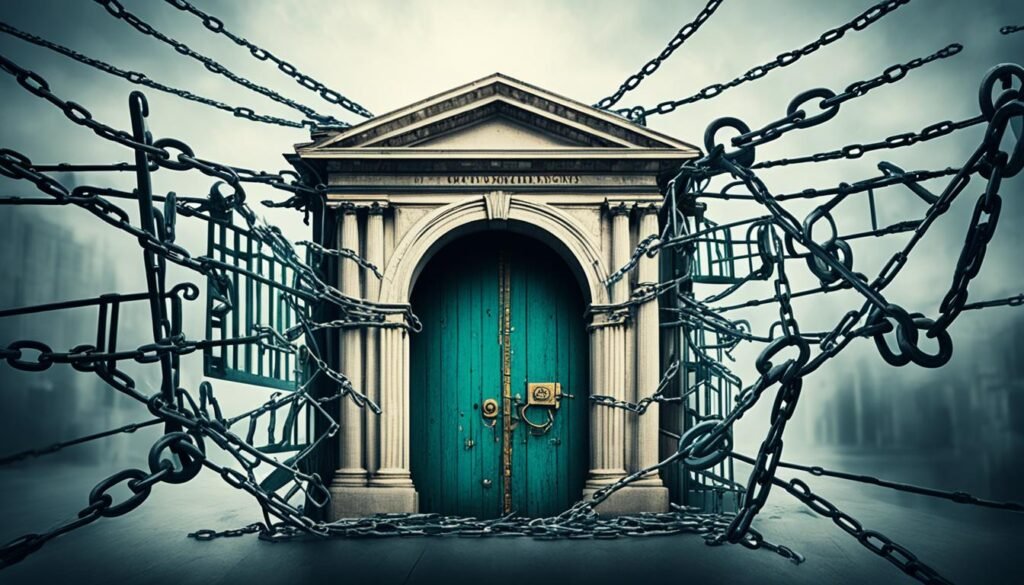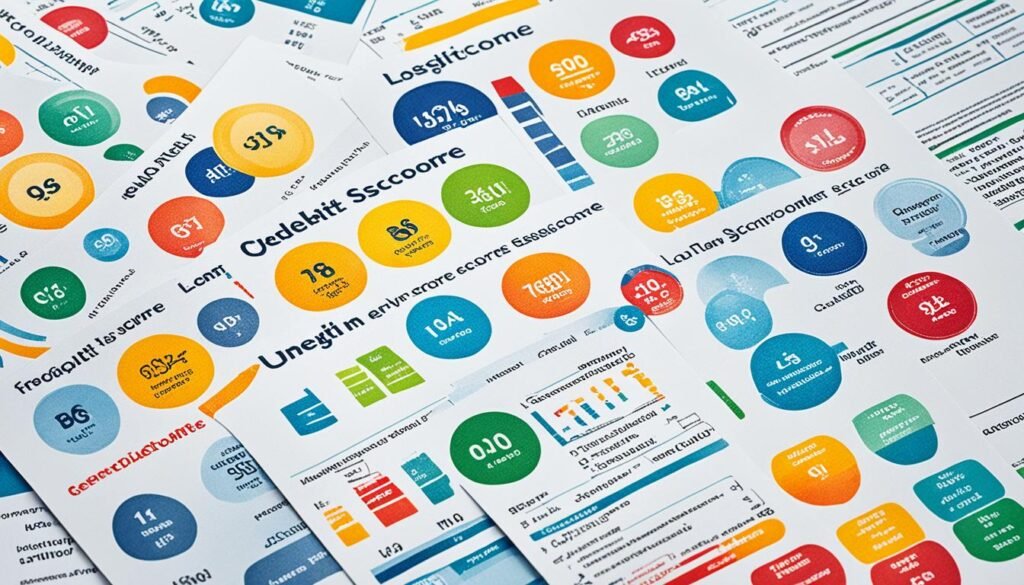It can be difficult to balance your wants and needs based solely on the amount of cash you have on hand. If you’re planning a wedding, ready for your next big vacation, or want to tackle a home renovation project, a loan could be the answer. Certain types of loans, known as secured loans, require you to include an asset as collateral in case of default, but there’s another option that doesn’t require you to risk losing a valuable asset like your home or car. That option is an unsecured loan.
Key Takeaways
- Unsecured personal loans don’t require collateral, unlike secured loans.
- Unsecured loans are typically used for personal expenses like debt consolidation, home renovations, or vacations.
- Approval for an unsecured loan depends on your credit score, income, and debt-to-income ratio.
- Unsecured loans often come with higher interest rates than secured loans.
- Unsecured loans offer flexible loan amounts and repayment terms.
What Is an Unsecured Personal Loan?
Unsecured personal loans are a popular financing option for individuals seeking funds without the need to collateralize a valuable asset. Rather than requiring a prospective borrower to offer a prized possession as collateral, an unsecured loan is attainable upon a lender’s close review of the borrower’s credit score, credit history, and debt-to-income ratio (DTI).
Definition and Concept
An unsecured personal loan is a type of installment loan that provides financing without the borrower having to pledge any collateral, such as a home or car. Instead, the lender evaluates the borrower’s creditworthiness based on factors like credit score, income, and debt obligations. This makes unsecured loans more accessible to those with good to excellent credit, as well as those seeking to consolidate debt or finance various personal expenses.
Key Features of Unsecured Personal Loans
The most common types of unsecured loans are personal loans, student loans, and credit cards. These types of loans typically offer flexible loan amounts, competitive interest rates, and fixed repayment terms that can range from 2 to 5 years. Unsecured personal loans can be utilized for a wide array of purposes, including debt consolidation, home renovations, medical expenses, and more.
Common Types of Unsecured Loans

While unsecured loans come in various forms, the most prevalent are personal loans, student loans, and credit cards. These types of unsecured loans offer borrowers the flexibility to use the funds for a wide range of purposes, from financing a dream wedding to tackling unexpected medical expenses or embarking on a much-needed home renovation project.
Personal Loans
Unsecured personal loans are a popular choice for those seeking funds without the need to put up collateral. These loans typically come with fixed interest rates and predictable monthly payments, making them an attractive option for debt consolidation, large purchases, or emergency financial situations. Borrowers with good to excellent credit scores and low debt-to-income ratios often qualify for the best unsecured personal loan terms, including lower interest rates and longer repayment periods.
Student Loans
For many students, securing an unsecured student loan is a crucial step in funding their higher education. These loans, which do not require collateral, can cover tuition, fees, books, and other educational expenses. Both federal and private lenders offer a variety of student loan options, each with their own eligibility requirements, interest rates, and repayment terms. Careful research and comparison shopping can help students find the best unsecured student loan to fit their needs and budget.
Credit Cards
Credit cards are a common type of unsecured loan, providing consumers with a revolving line of credit that can be used for a wide range of purchases. While credit cards offer convenience and flexibility, they often come with higher interest rates compared to other unsecured loan options. Responsible credit card usage, including making timely payments and keeping balances low, can help build a strong credit history and potentially qualify borrowers for better credit card terms in the future.
Advantages of Unsecured Personal Loans

When it comes to personal financing options, unsecured personal loans offer several distinct advantages that make them an attractive choice for many individuals. Let’s explore some of the key benefits of these types of loans.
No Collateral Required
One of the most significant advantages of an unsecured personal loan is that it does not require any collateral. Unlike a secured loan, where the borrower must pledge an asset like a home or car as collateral, an unsecured loan is based solely on the borrower’s credit score and creditworthiness. This means you don’t have to risk losing a valuable asset if you’re unable to repay the loan, providing greater peace of mind and financial flexibility.
Flexible Loan Amounts
Unsecured personal loans can typically be obtained for amounts ranging from $1,000 to $100,000, depending on the lender and the borrower’s credit history and debt-to-income ratio. This flexibility allows borrowers to access the loan amount they need, whether it’s for a major expense like a wedding, home renovation, or medical bill, or a more modest financial need. The ability to customize the loan term and loan amount to suit your specific requirements is a significant advantage of these types of loans.
Competitive Interest Rates
While unsecured personal loans may have slightly higher interest rates compared to secured loans, they still offer competitive rates that can be lower than those associated with credit cards. Lenders often consider factors like your credit score, income, and debt-to-income ratio when determining the interest rate and loan terms they can offer. By shopping around and comparing offers from multiple lenders, borrowers can often find an unsecured personal loan with a rate and terms that fit their financial needs and budget.
Disadvantages of Unsecured Personal Loans

While unsecured personal loans offer the convenience of not requiring collateral, they do come with some notable drawbacks. One primary disadvantage is the higher interest rates that accompany these types of loans. Since lenders take on more risk by not having an asset to recoup their losses, they often charge borrowers higher interest rates to offset that risk.
Another potential downside is that unsecured personal loans can be harder to get approved for, especially for borrowers with bad credit or a high debt-to-income ratio. Lenders scrutinize the credit history and financial profile of applicants more closely, and those who don’t meet their strict credit score and income requirements may have fewer borrowing options.
Furthermore, the maximum loan amount for an unsecured personal loan is generally lower than that of a secured loan, such as a home equity loan. This can be a significant drawback for borrowers who need to access a larger loan amount to finance a major expense.
| Advantage | Disadvantage |
|---|---|
| No Collateral Required | Higher Interest Rates |
| Flexible Loan Amounts | Harder to Get Approved |
| Competitive Interest Rates | Fewer Borrowing Options |
| Lower Maximum Loan Amounts |
In summary, while unsecured personal loans offer convenience and flexibility, they also come with the potential drawbacks of higher interest rates, stricter qualifications, and lower maximum loan amounts. Borrowers should carefully weigh these pros and cons to determine if an unsecured personal loan is the best fit for their financial needs and goals.
How Unsecured Personal Loans Work

Unsecured personal loans, sometimes known as “signature” loans, are a type of installment loan with a fixed interest rate and a repayment plan involving equal monthly installments. The loan terms are generally 2 – 5 years. You’ll first need to complete an application and receive lender approval. After approval, you’ll receive your loan terms, repayment terms and the total loan amount you’re approved to borrow. Depending on your lender, the funds may be available the same day you’re approved or within a few business days. The loan is typically a direct deposit available in one lump sum and begins accruing interest in the first month.
Application and Approval Process
To apply for an unsecured personal loan, you’ll typically need to provide your lender with personal information such as your full name, current address, income information, Social Security number, and date of birth. Your credit score and debt-to-income ratio (DTI) will be closely evaluated to determine your eligibility and loan amount. Lenders may offer rate discounts for applicants with excellent credit or who agree to set up automatic payments.
Loan Disbursement and Repayment
Once you’re approved for an unsecured personal loan, the loan proceeds are typically deposited into your bank account in a single lump sum. You’ll then begin making fixed monthly payments over the life of the loan, which can range from 2 to 5 years depending on the lender and your specific loan terms. Missed payments can affect your credit and trigger fees, so it’s important to stay on top of your repayment schedule.
Unsecured Personal Loan Qualifications

Qualifying for an unsecured personal loan typically requires meeting specific criteria set by the lender. Key factors that can influence your eligibility include your credit score, income, and debt-to-income (DTI) ratio.
Credit Score Requirements
Most lenders have a minimum credit score requirement for unsecured personal loans, often around 640 or higher. Borrowers with excellent credit (typically 740 or above) may be eligible for the best interest rates and loan terms. On the other hand, those with poor credit or bad credit may face challenges in getting approved or may only qualify for higher interest rates.
Income and Debt-to-Income Ratio
In addition to your credit score, lenders will also evaluate your income and debt-to-income (DTI) ratio. Typically, you’ll need a DTI below 36% to qualify for an unsecured personal loan. This means your monthly debt payments, including the new loan, should not exceed 36% of your gross monthly income.
Other Eligibility Factors
Beyond your credit score and DTI, lenders may also consider other factors when evaluating your eligibility for an unsecured personal loan, such as your employment status, length of credit history, and existing debt obligations. It’s important to review the specific eligibility criteria set by each lender to understand your chances of getting approved.
Unsecured Personal Loan

Unsecured personal loans offer a flexible and convenient financing option for a variety of purposes, from debt consolidation to home renovations. Unlike secured loans that require collateral, unsecured personal loans are based solely on the borrower’s creditworthiness, including their credit score, income, and debt-to-income ratio. This makes them an attractive choice for those who may not have valuable assets to use as collateral, or who simply prefer to keep their assets unencumbered.
One of the key advantages of unsecured personal loans is their flexible loan amounts, which can range from $1,000 to $100,000 or more, depending on the lender and the borrower’s qualifications. This allows borrowers to access the loan amount they need, whether it’s a small personal project or a larger financial goal. Additionally, unsecured personal loans often come with competitive interest rates and fixed repayment terms, making it easier for borrowers to budget and manage their monthly payments.
While unsecured personal loans offer many benefits, it’s important for borrowers to carefully consider the potential drawbacks, such as the higher interest rates and stricter credit requirements compared to secured loans. Borrowers should also be mindful of the impact an unsecured personal loan can have on their credit score and debt-to-income ratio.
Ultimately, unsecured personal loans can be a valuable financing option for those who need access to funds quickly and conveniently, without the need to put up collateral. By understanding the qualifications, application process, and repayment terms, borrowers can make an informed decision about whether an unsecured personal loan is the right choice for their financial needs.
Alternatives to Unsecured Personal Loans
While unsecured personal loans offer a convenient and flexible borrowing option, they may not always be the best fit for every financial situation. Borrowers should also consider alternative loan products that may better suit their needs and creditworthiness. Some popular alternatives to unsecured personal loans include secured personal loans, credit cards, and home equity loans.
Secured Personal Loans
A secured personal loan requires the borrower to provide collateral, such as a vehicle or a savings account, to secure the loan. This type of loan typically carries a lower interest rate than an unsecured personal loan, as the lender has a lower risk of default. However, borrowers should be aware that they risk losing their collateral if they fail to make the loan payments.
Credit Cards
Credit cards can be a useful alternative to unsecured personal loans, especially for smaller financing needs. Many credit cards offer competitive interest rates and the flexibility to make purchases and pay off the balance over time. However, it’s important to carefully manage credit card usage and avoid accumulating high-interest debt.
Home Equity Loans
For homeowners, a home equity loan or line of credit can be a viable alternative to an unsecured personal loan. These loans use the borrower’s home as collateral, often resulting in lower interest rates. However, this option carries the risk of potentially losing one’s home if the loan payments are not made. Borrowers should carefully consider the pros and cons of using their home as collateral before pursuing a home equity loan.Unsecured personal loans, unlike secured personal loans, don’t require collateral, making them an attractive option for those seeking flexible personal finance solutions. These loans typically come with fixed rates and higher interest rates compared to secured loans, reflecting the increased risk to lenders. To get an unsecured loan, you need to meet certain credit score requirements, as lenders assess your creditworthiness to approve a loan. If you qualify for an unsecured personal loan, you can use it for various purposes such as debt consolidation, medical expenses, or home improvements. Applying for an unsecured personal loan is straightforward; many personal loan lenders, including online lenders, offer unsecured loans with a variety of loan amounts and terms. Understanding the loan details, including loan rates, repayment schedules, and the potential to pay off your loan early, is crucial. While unsecured personal loans don’t require collateral, defaulting on the loan can adversely affect your credit score. Comparing the differences between secured and unsecured personal loans can help you find the best loan offer for your needs. Whether you’re approved for a loan to pay off debt or finance a major purchase, an unsecured personal loan provides a viable financial solution without the risk associated with a home equity loan or other secured loans.
Also Read: Personal Finance in the Digital Age: Managing Online Accounts, Loans, and Insurance Policies
Conclusion
Unsecured personal loans offer a flexible and accessible financial solution for individuals needing funds without providing collateral. This guide has explored the key aspects of unsecured personal loans, highlighting their benefits, such as the absence of collateral requirements, which eliminates the risk of asset loss. These loans typically have quicker approval processes and can be used for various purposes, including debt consolidation, medical expenses, and home improvements.
However, unsecured personal loans come with their own set of challenges. Higher interest rates compared to secured loans are common due to the increased risk to lenders. Additionally, borrowers need to have a good credit score to qualify for favorable terms, making it essential to maintain a healthy credit history. Understanding the terms and conditions, including fees and repayment schedules, is crucial to avoid potential pitfalls.
In conclusion, unsecured personal loans can be a valuable financial tool when used wisely. Borrowers should carefully assess their financial situation, compare loan offers from different lenders, and ensure they can meet the repayment obligations. By doing so, they can effectively leverage unsecured personal loans to meet their financial goals without compromising their financial stability. This comprehensive guide aims to equip borrowers with the knowledge needed to make informed decisions in the realm of unsecured personal lending.
FAQs
Q: What is an unsecured personal loan?
A: An unsecured personal loan is a type of loan that does not require any collateral to secure the loan amount.
Q: How do unsecured loans work?
A: Unsecured loans work by lending you a fixed amount of money which you repay in fixed monthly installments over a specific period.
Q: How can I qualify for an unsecured personal loan?
A: To qualify for an unsecured personal loan, you typically need a good credit score and a steady income to show lenders that you can repay the loan amount.
Q: What is the difference between secured and unsecured loans?
A: Secured loans require collateral to secure the loan, while unsecured loans do not require any collateral and are based solely on the borrower’s creditworthiness.
Q: Can I apply for an unsecured personal loan with bad credit?
A: It may be more challenging to qualify for an unsecured personal loan with bad credit, but some lenders specialize in providing loans to individuals with less-than-perfect credit.
Q: How to get the best unsecured personal loans with low interest rates?
A: To get the best unsecured personal loans with low interest rates, it’s important to shop around, compare offers from different lenders, and maintain a good credit score.
Q: What is the maximum loan amount I can get with an unsecured personal loan?
A: The maximum loan amount you can get with an unsecured personal loan varies depending on the lender, your credit history, and income but usually falls within a specific range set by the lender.
Source Links
- https://www.quickenloans.com/learn/unsecured-loans
- https://medium.com/@doctorfinance/understanding-unsecured-loans-a-comprehensive-guide-1ec4ed4c77f3
- https://www.bankrate.com/loans/personal-loans/unsecured-loans-definition/





